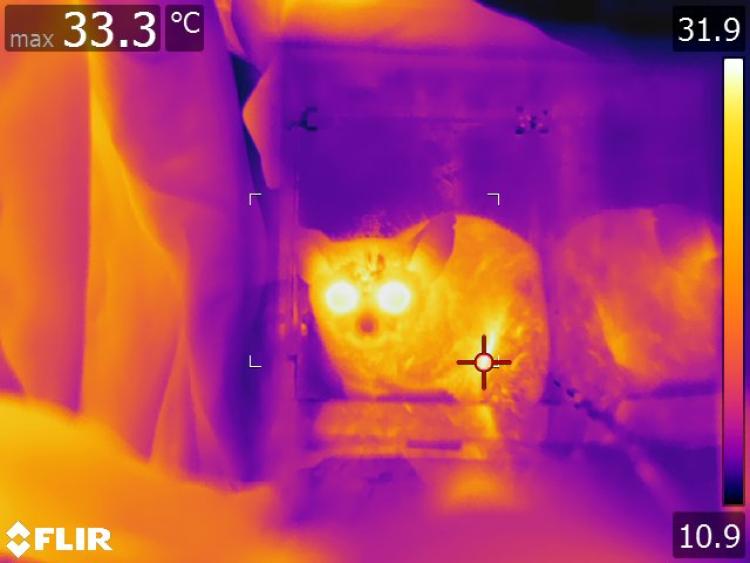Studying an elusive South African primate
At a remote South African research field site, CU Boulder professor Michelle Sauther and alumnus Frank Cuozzo are leading research on two of the world’s least studied non-human primates: the iconic, big-eyed African bushbabies, also known as galagos.
The small southern lesser galago can fit in a human’s hand, while the greater thick-tailed galago is cat-sized and much larger than its counterpart. According to Sauther, it’s like comparing a gorilla to a baboon.
While nearly all primate species live in the tropics, these bushbaby species are two of the few primates that live within temperate areas outside of the tropics. Due to their dramatic size difference, they are allowing Sauther and Cuozzo to better understand how body size may affect their ability to deal with challenging temperate environments.
To do this, the researchers are using cutting-edge technology that includes thermal imaging cameras that can assess real-time internal temperatures of the primates who live in the temperate forests of the Lajuma Research Centre. Sauther and Cuozzo were recently awarded a $245,000 grant from the National Science Foundation (NSF) for the study.
“It is extremely difficult to study nocturnal primates, but they are important for understanding a variety of questions regarding primate evolution and environmental change,” said Sauther. “So we are using high-tech methods for expanding our understanding of these primates.”

Thermal imagery of an African bushbaby
Galagos are among the least studied primates and “are also often incorrectly viewed as having little conservation concern,” she said.
Preliminary data collected during the current field season indicate several human-induced threats to these primates, particularly the larger thick-tailed galago.
“This project will provide the first comprehensive data of population numbers, health status and life history data on southernmost Africa’s two species of bushbaby that will allow a more thorough analysis of their conservation status,” said Sauther.
There is not much information available on how challenging environments impact primates, she said. Sauther and Cuozzo are using data gathered at the Lajuma Research Centre in South Africa, which show that the weather has big seasonal and annual variations in temperature and rainfall.
“We feel that understanding the thermal, dietary and behavioral ecology of these two primates living in a temperate environment will be key for addressing what factors allow primates to adjust to a changing environment,” said Sauther.
The funding also supports CU Boulder alumnus James Millette as the on-site director, as well as provides support and training of several South African graduate students, including Harry Msimango Vümboni of the University of Venda and Channen Long of National Zoological Gardens of South Africa. An American undergraduate student, Domenic Romanello of the Canisius College in Buffalo, New York, is also being trained as part of the project.
The legacy of this study will likely be to further the understanding of how primates living outside of tropical climates adjust to variable weather and climate conditions and events, which will inform how primates living in changing, fluctuating tropical environments may adapt to changes in climate in the coming years, Sauther said.


